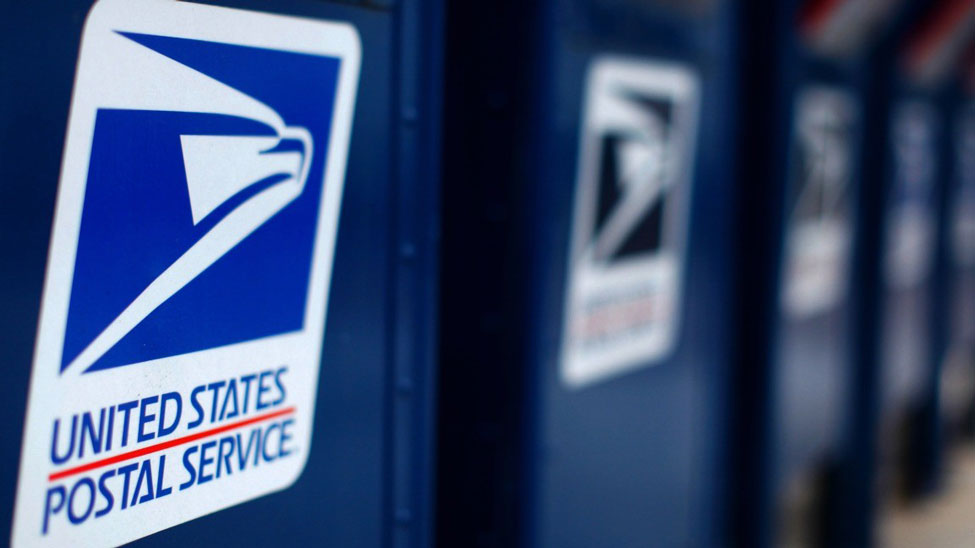
U.S. Postal Service CFO: We remain on track

The U.S. Postal Service has announced its financial results for the second quarter of its fiscal year 2022 (Jan. 1, 2022 – March 31, 2022), reporting an adjusted loss of approximately $1.7 billion for the quarter, essentially flat compared to the same quarter last year.
Adjusted loss excludes non-cash workers’ compensation adjustments for the impacts of actuarial revaluation and discount rate changes, which are outside of management’s control. On a U.S. generally accepted accounting principles (“GAAP”) basis, the Postal Service had a net loss of $639 million for the quarter, compared to a net loss of $82 million for the same quarter last year.
On April 6, 2022, Postal Service reform legislation was enacted establishing the Postal Service Health Benefits program for the Postal Service’s employees and retirees and requiring their enrollment in Medicare; repealing the requirement that the Postal Service annually prepay future retiree health benefits and cancelling all past due prefunding payments; providing authority for the provision of certain services to state, local, and tribal governments; requiring the Postal Service to develop and maintain a publicly available dashboard to track service performance and to report regularly on its operations and financial condition; codifying delivery frequency at six days per week in those areas where it is currently provided; and requiring that the Postal Service maintain an integrated delivery network for mail and packages. When this legislation went into effect on April 6, 2022, it did not change the conditions surrounding the Postal Service’s retiree health benefits as of March 31, 2022, and, therefore, the repeal of the prefunding for retiree health benefits and the cancellation of past due amounts will be reflected in the Postal Service’s third quarter results.
During the quarter, the Postal Service also delivered approximately 320 million COVID-19 tests to the American public and continues to deliver as it receives requests from American households.
Service performance continued to improve during the second quarter. Specifically, it took on average 2.7 days to deliver a First-Class mailpiece during the quarter, which is a 7 percent improvement compared to the average of 2.9 days in the same quarter last year. From an on-time delivery perspective, 87.9 percent of First-Class Mail pieces were delivered on time during the quarter, compared with on-time delivery of 78.1 percent during the same quarter last year.
First-Class Mail service performance improvements are ongoing, and last week First-Class Mail was delivered on-time 93 percent of the time. One of the goals of Delivering for America, the Postal Service’s 10-year plan for achieving financial sustainability and service excellence, is to meet or exceed 95 percent on-time service performance for all mail and shipping products once all elements of the plan are implemented.
“During the quarter we made strong strides in on-time service performance, demonstrated the effectiveness of our network through the delivery of COVID-19 tests, and continued to aggressively implement key aspects of Delivering for America, our 10-year transformation plan,” said Postmaster General and CEO Louis DeJoy. “Our financial results this quarter demonstrate the challenging nature of the current inflationary economic environment as we make structural progress in balancing longstanding revenue and cost imbalances and returning the organization toward financial sustainability.”
The Postal Service’s operating revenue was approximately $19.8 billion for the quarter, an increase of $896 million, or 4.7 percent, on volume growth of 886 million pieces, or 2.9 percent, compared to the same quarter last year.
Marketing Mail revenue increased $512 million, or 15.9 percent, compared to the same quarter last year, on volume growth of approximately 1.2 billion pieces, or 8.4 percent. Marketing Mail experienced steep volume declines at the onset of the pandemic but has been rebounding as the economy continues to recover. Marketing Mail has generally proven to be a resilient marketing channel and its value to U.S. businesses remains strong due to healthy customer returns on investment and better data and technology integration. Revenue grew at a greater rate than volume due to price increases.
First-Class Mail revenue increased $296 million, or 5.0 percent, compared to the same quarter last year, despite a volume decline of 82 million pieces, or 0.6 percent, due to continuing migration from mail to electronic communication and transaction alternatives. First-Class Mail volume remains lower than pre-pandemic levels and we expect continued secular declines. Revenue grew despite the decline in volume due to price increases.
Shipping and Packages revenue increased $98 million, or 1.3 percent, despite a volume decline of 94 million pieces, or 5.0 percent. Higher package volumes in the prior year were due to the pandemic-related surge in e-commerce, which continues to abate as the economy recovers and market competition intensifies. However, Shipping and Packages volume remains higher than pre-pandemic levels. Revenue grew despite the decline in volume due to price increases.
The pandemic has significantly transformed the mix of mail and packages processed through the Postal Service’s network and the Postal Service anticipates that its volumes and mix will not return to pre-pandemic levels. The Postal Service continues to grow its revenue in mail services through optimization of its pricing strategies and effective use of its pricing authority, as outlined in the Delivering for America plan.
Total operating expenses increased approximately $1.5 billion, or 7.7 percent, compared to the same quarter last year. Excluding non-cash workers’ compensation adjustments for the impacts of actuarial revaluation and discount rate changes, total operating expenses increased $908 million, or 4.4 percent, driven largely by ongoing inflation.
Compensation and benefits expense increased $354 million, or 2.9 percent, compared to the same quarter last year, primarily due to contractual wage increases, including the inflationary impacts on related cost of living adjustments, partially offset by lower work hours.
Workers’ compensation expense increased by $477 million, compared to the same quarter last year, due to the impact of changes in discount rates and actuarial revaluation, which are outside of management’s control.
Other operating expense increased $369 million, or 14.4 percent, compared to the same quarter last year, as inflationary pressures have led to higher average fuel prices for delivery vehicles and an increase in rent and utilities.
“While our operating revenue grew compared to the same quarter last year, we have been challenged by rising costs due to inflation, leading to an adjusted loss for the quarter. We continue to aggressively manage our business by optimizing our network, maximizing productivity, and aligning our pricing strategies with organization and marketplace needs,” said Chief Financial Officer Joseph Corbett. “We remain on track to achieve break-even performance for the ten-year period from FY2021 to FY2030, reversing the $160 billion in projected losses over the same period.”











